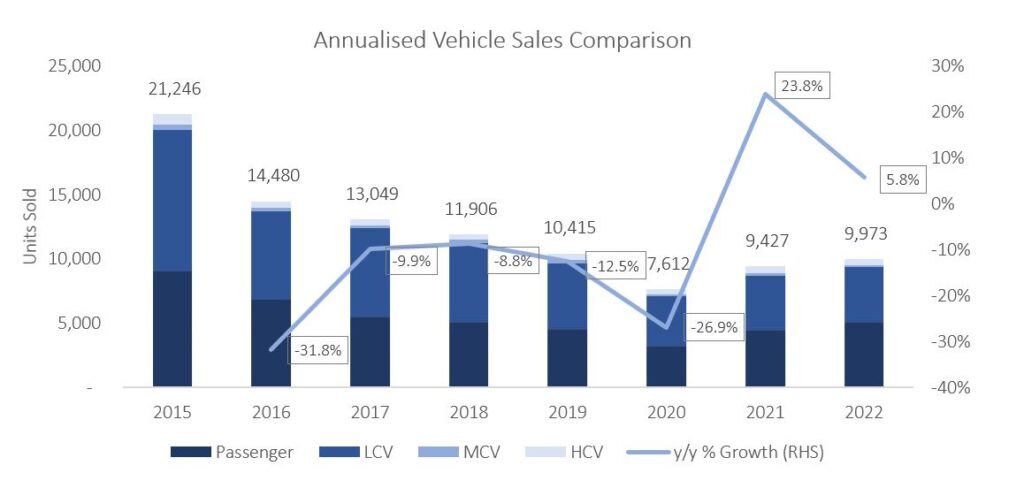
1,045 new vehicles were sold in November, up 4.9% m/m from the 996 vehicles sold in October, and an increase of 38.4% y/y from the 755 vehicles sold in November 2021. Year-to-date, 9,973 new vehicles have been sold, of which 5,072 were passenger vehicles, 4,265 light commercial vehicles, and 636 medium and heavy commercial vehicles. On a twelve-month cumulative basis, a total of 10,707 new vehicles were sold at the end of November, representing a 13.9% y/y increase from the 9,397 sold over the comparable period a year ago.
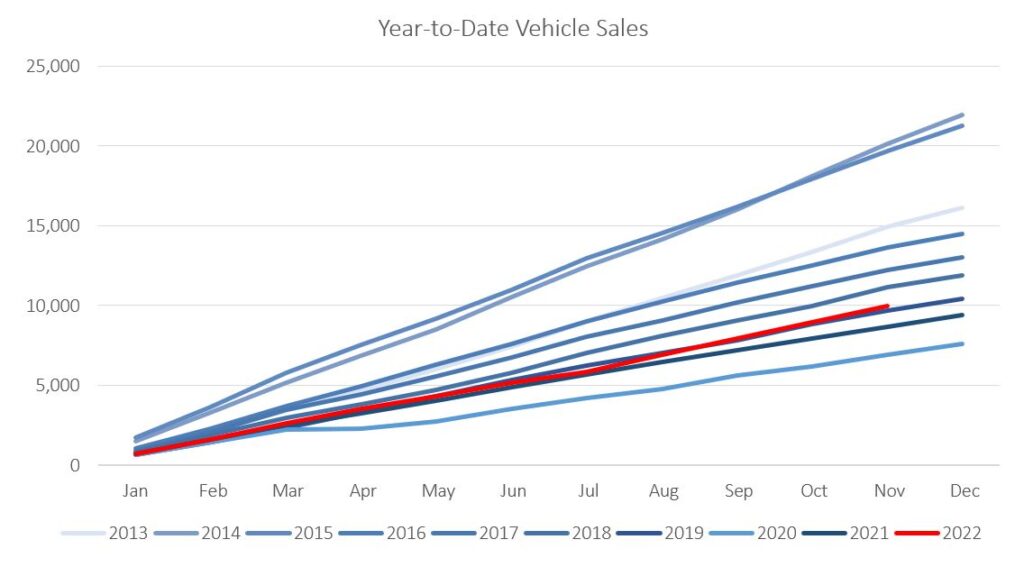
A total of 531 new passenger vehicles were sold during November, 65 more than the 466 sold in October, and an increase of 29.4% y/y from the 379 vehicles sold in November last year. Toyota once again took the spoils in this segment after amassing 35.8% of the new passenger vehicle sales in November, followed by Volkswagen which accounted for 14.9% of the sales. Year-to-date, new passenger vehicle sales rose to 5,072, a 23.0% y/y jump from the 4,122 vehicles sold during the same period last year. On a 12-month cumulative basis, new passenger vehicle sales grew by 21.9% y/y to 5,434, a level last observed in 2018.
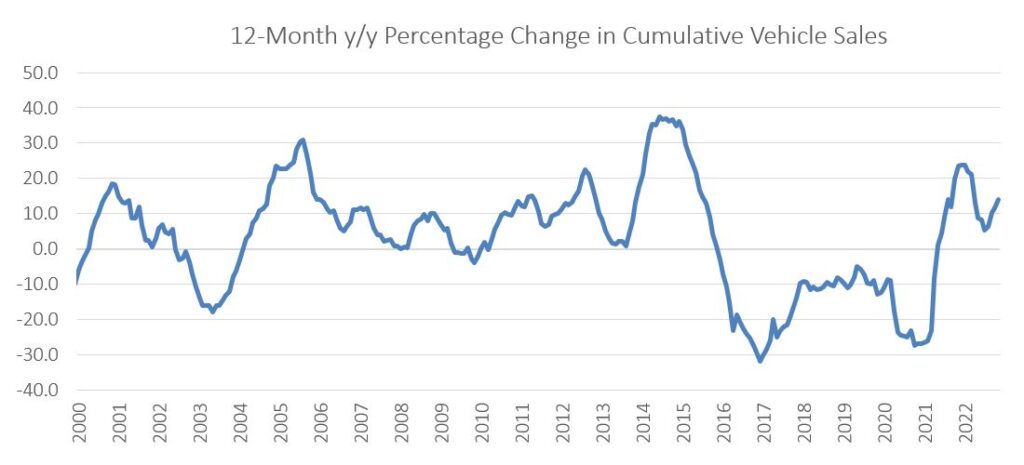
514 new commercial vehicles were sold in November, 16 fewer than in October but up by 36.7% y/y from the 376 commercial vehicles sold in November last year. Light commercial vehicle sales fell by 2.8% m/m to 447 but increased by 41.5% y/y when compared to the 317 sold a year ago. Medium commercial vehicle sales rose by 8.3% m/m to 26 and up by 44.4% y/y when compared to the 18 sold in November last year. Heavy commercial vehicle sales however declined by 10.9% m/m to 41 and down by 2.4% y/y from the 42 sold in November 2021. On a twelve-month cumulative basis, light commercial vehicle sales increased by 9.6% y/y to 4,580, while medium commercial vehicle sales fell by 2.0% y/y to 194 and heavy commercial vehicles decreased by 11.7% y/y to 499. November saw a new entrant in the heavy commercial vehicles category with JAC recording its first sale in this segment.
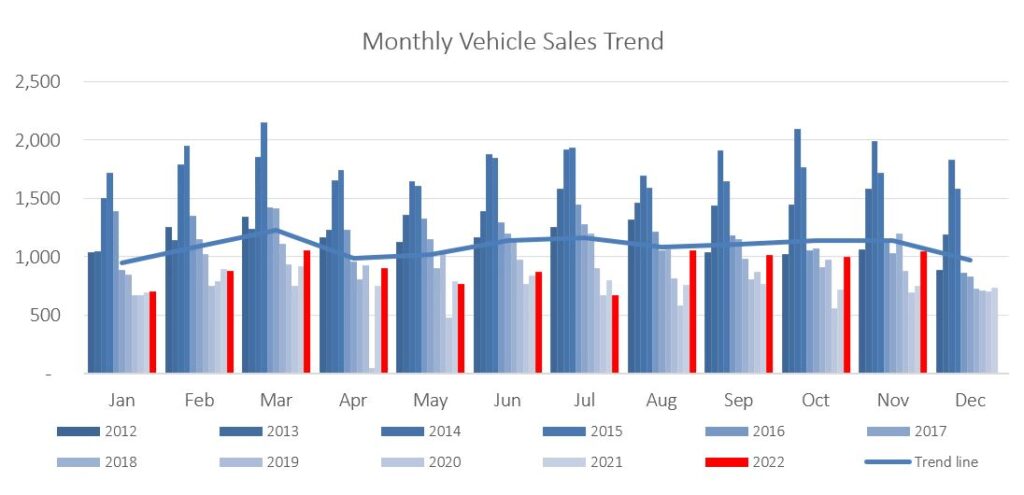
Toyota continues its dominance in the new passenger vehicle sector with 33.2% of the segment’s sales year-to-date, followed by Volkswagen with 21.4% of the market share. Kia and Suzuki are the best of the rest with 9.2%, and 7.7% of the market share while the other brands account for the remaining 28.5%.
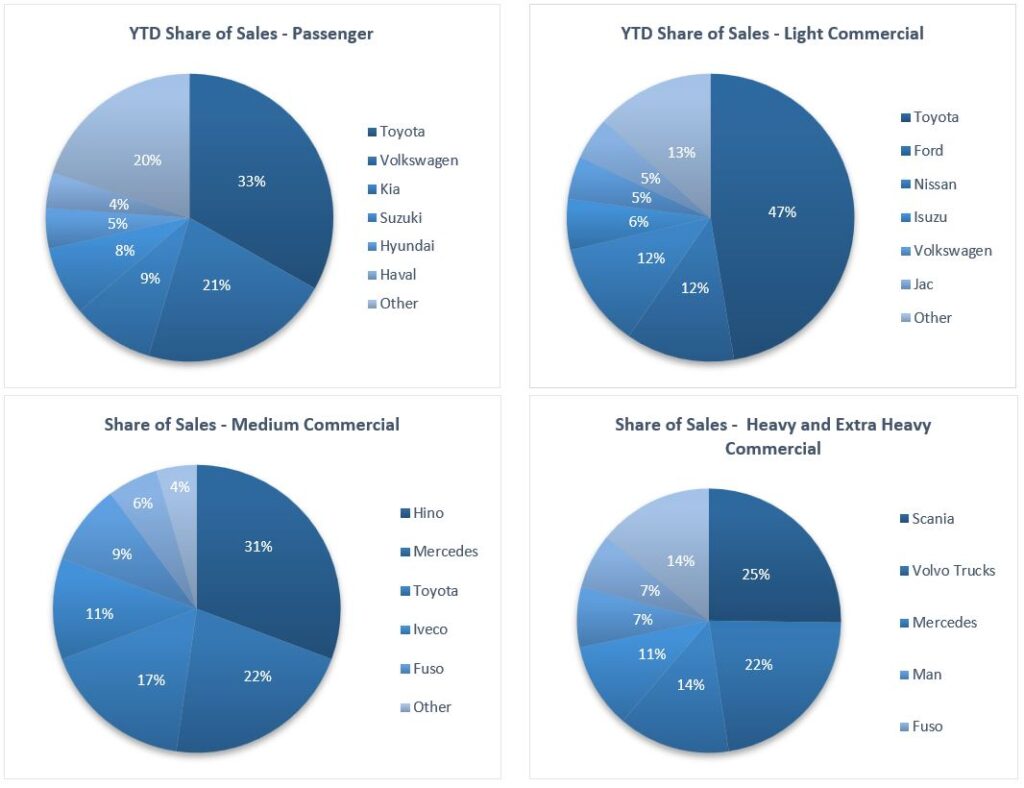
On a year-to-date basis, Toyota also maintained its reign in the light commercial vehicle space with 47.4% of the segment’s sales year-to-date, followed by Ford with 12.2% of the market share and Nissan with 11.8%. Hino continued its dominance in the medium commercial vehicle segment with 30.7% of sales year-to-date while its closest competitor, Mercedes, accumulated 21.6% of the sales in this segment year-to-date. In the heavy and extra-heavy commercial vehicle market, Scania retained the top spot with 25.2% of the market share, followed by Volvo Trucks with a 22.4% market share.
New vehicle sales grew from last month and breached the 1,000 new vehicle sales mark for the fourth time this year. The 1,045 new vehicles sold in November was the highest number recorded for November since 2018. The year-to-date chart at the top of this report shows that new vehicle sales have surpassed the total number of new vehicles sold for the whole of last year and are well on track to beat the 10,000 annual total new vehicle sales mark which was last observed in 2019. Unless a very dismal sales figure is recorded in December, total sales for 2022 are expected to come in above the 10,415 total new vehicles sold in 2019.
November’s strong vehicle sales came on the back of solid passenger vehicle sales. The 531 new passenger vehicles sold in November was the highest monthly sales number recorded so far this year and brought the average monthly figures for the year to date to 461 and on par with the numbers last seen in 2018. New commercial vehicle sales, in contrast, saw a slight contraction in November but remained relatively strong, nonetheless. Despite the drop, the 514 new commercial vehicles sold in November came in above the 446 sold on average each month for the year to date. On a 12-month cumulative basis, 5,273 new vehicles were sold but continue to lag the pre-pandemic 2019 average of 6,300 with little support for a recovery soon.
